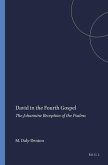This volume examines early Jewish and Christian imagery to demonstrate that the most probable interpretation of Christ's descent in Ephesians 4:9-10 refers to the descent of the Spirit at Pentecost subsequent to the ascent mentioned in Ephesians 4:8. The central portion of the book deals with the ascent-descent imagery associating Ps. 68:19 with Moses as found in Targum Psalms, the rabbinic literature, and other early sources. The section dealing with rabbinic interpretations of Ps. 68:19 is of particular importance demonstrating an approach for dating elements found in the later rabbinic tradition. The theological innovation of the author of Ephesians in identifying the ascended Christ as the Spirit who descended at Pentecost is highlighted as the best explanation of this difficult passage.








